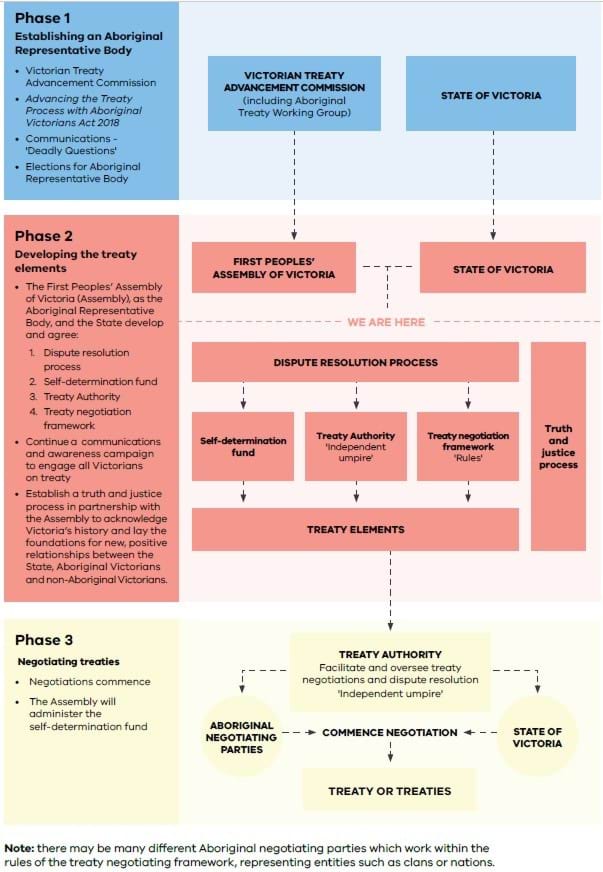Since that time, Victoria has been leading the nation to progress treaty and truth and advance Aboriginal self-determination in partnership with Traditional Owners and Aboriginal Victorians.
Victoria is currently in Phase 2 of a three-phase process towards treaty.
Phase 1: Establishing an Aboriginal Representative Body
Phase 1 began with the Victorian Government’s commitment to treaty, and included:
- extensive community consultation
- appointment of a dedicated Victorian Treaty Advancement Commissioner to consult on, design and establish the Aboriginal Representative Body
- launch of Deadly Questions, an award-winning campaign to build public awareness and support for treaty
- passage of the Advancing the Treaty Process with Aboriginal Victorians Act 2018 (Treaty Act), Australia’s first treaty legislation
- establishment of the First Peoples’ Assembly of Victoria (Assembly), the first statewide, democratically elected representative body for Traditional Owners and Aboriginal Victorians in the state’s history.
On 9 December 2019, on the recommendation of the Victorian Treaty Advancement Commissioner, the former Minister for Aboriginal Affairs, Gavin Jennings, declared the Assembly to be the Aboriginal Representative Body under the Treaty Act. This declaration, via a notice in the Victorian Government Gazette, recognised the Assembly as the State’s partner in the next phase of treaty. This signified the completion of Phase 1 of the treaty process.
The Advancing the Treaty Process Annual Report and Plan 2018–19 describes the work undertaken in Phase 1 in further detail.
Phase 2: Developing a treaty framework
We are currently in Phase 2 of the treaty process. Phase 2 commenced in December 2019, following the Assembly’s declaration as the Aboriginal Representative Body under the Treaty Act. As the Aboriginal Representative Body, the Assembly is the sole representative of Traditional Owners and Aboriginal Victorians responsible for working with the State to establish the elements necessary to support future treaty negotiations. These elements are a dispute resolution process, a Treaty Authority, a treaty negotiation framework and a self-determination fund. Together these four elements are referred to throughout this document as the “treaty elements”.
Phase 2 does not involve the negotiation of a treaty or treaties. Instead, through the treaty negotiation framework, the Assembly and the State will determine the minimum standards that Aboriginal parties must meet to have standing to negotiate a treaty or treaties with the State in Phase 3.
In addition to Phase 2 progress set out in this report, the Advancing the Treaty Process Annual Report and Plan 2019–20 describes initial work undertaken to commence Phase 2.
Phase 3: Negotiating treaties
Phase 3 will commence once the State and the Assembly have established the treaty elements by agreement. Phase 3 will involve the State negotiating and agreeing treaties with Aboriginal negotiating parties.
As set out in the Treaty Act, the treaty negotiation framework must provide for the negotiation of a treaty or treaties that recognise historic wrongs, support reconciliation and have positive impacts for Victoria, among other matters. What this might look like, and any other content of a future treaty or treaties, will be subject to negotiation between the parties to any treaty or treaties.
During Phase 3, the self-determination fund will play a critical role in supporting Aboriginal negotiating parties to have an equal standing with the State in treaty negotiations.
Updated


